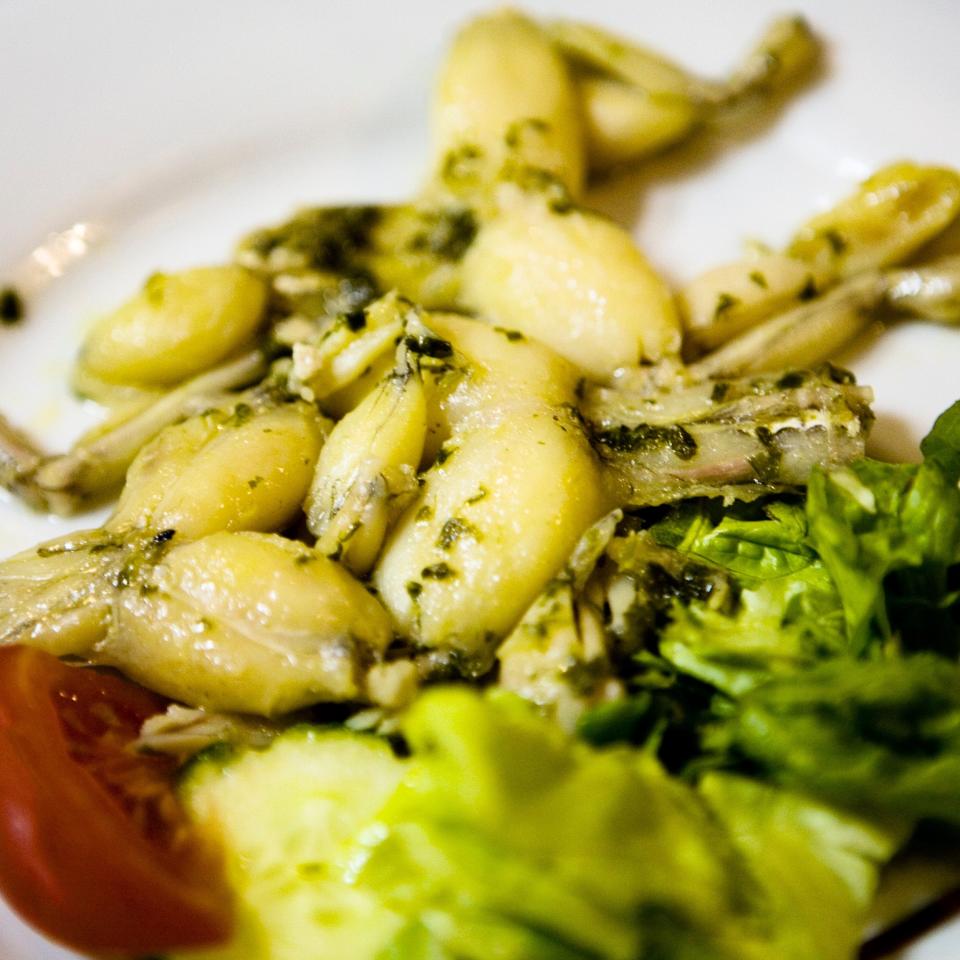Frogs are being eaten to extinction ... and the Germans are to blame

Europe’s voracious appetite for frogs’ legs has triggered an “extinction domino effect” on wild populations of the amphibians in parts of Asia and Eastern Europe, wildlife campaigners warned on Thursday.
France is notorious for its taste for “cuisses de grenouilles”, as frogs’ legs are known, but it is far from being the only EU country with a penchant for the delicacy, often served with parsley, garlic and butter.
According to Pro Wildlife, which is based in Germany, and French non-profit NGO Robin des Bois, EU states import around 4,070 tons of frogs’ legs every year, the limbs of as many as 200 million frogs.
Data show that Germany trumped France for the largest imports of frogs for the year 2020, forking out £73 million. Meanwhile, France imported £33 million worth of frogs for the same year.
That makes Europe the world’s largest consumers of frogs’ legs, with large-limbed species – such as the crab-eating frog and the East Asian frog – in particular demand among gourmands.
However, the vast majority of that haul is caught in the wild.
‘Dramatic consequences’ for frog populations
In a new report, the two wildlife organisations warn that the “ongoing over-exploitation of frog stocks for the EU market over decades has had dramatic consequences” on wild frog populations.
The vast majority of frog species are not protected by the Convention on International Trade in Endangered Species of Wild Flora and Fauna (CITES), meaning that the sale of frogs’ legs is “poorly monitored or regulated, or not regulated at all”, the report states. As a consequence, amphibians are the most threatened group of vertebrates in the animal world.
The loss of hundreds of millions of the amphibians, in turn, has had a serious knock-on impact on biodiversity and the health of broader ecosystems.
“Large frog species are dwindling in the wild, one after the other, causing a fatal domino effect for species conservation”, said Dr Sandra Altherr, co-founder of Munich-based Pro Wildlife.

Indonesia has leapfrogged India and Bangladesh to become Europe’s largest supplier of the delicacy, which some say tastes like chicken, delivering more than 30,000 tons to European plates between 2010 and 2019, the report said.
Scientists in Turkey have warned that native water frogs could become extinct by 2032 if steps are not taken to protect wild populations. In Albania, the Scutari water frog is now on the national list of threatened species.
Beyond human consumption, it is thought amphibians’ two-stage life cycle, aquatic and terrestrial, makes them twice as vulnerable to environmental and climate change, and their permeable skins may be more susceptible to toxins than other animals.
In recent years, a devastating fungal condition, chytridiomycosis, caused catastrophic population declines in Australia and the Americas.
Popular in the US
While Europe is a major culprit, frogs’ legs are also popular in the US, particularly in the former French colony of Louisiana, where the city of Rayne likes to call itself Frog Capital of the World, but also in Arkansas and Texas, where they are mostly served breaded and deep-fried.
The world’s most avid frog eaters outside of Europe are almost certainly in Asia, with South America also a big market.

With annual consumption estimated at 4,000 tons, France remains notorious for its love of frogs’ legs, nowhere more so than in the Vosges spa town of Vittel, which holds an annual Foire aux Grenouilles (Frog Fair) and has its own Brotherhood of Frog Thigh Tasters.
After two years’ absence due to Covid, the fair was back this April for its 48th event with around 20,000 gourmet frog aficionados gobbling around seven tons of frogs’ legs.
When the fair began, its founder René Clément, resistance hero, restaurateur and last of the great Lorraine frog ranchers, could supply all the necessary amphibians from his lakes 20 miles or so away. His catchphrase, oft-quoted around these parts, was that frogs “are like women. The legs are the best bits”.
Nowadays, however, none of the frogs are even French.

 Yahoo News
Yahoo News 